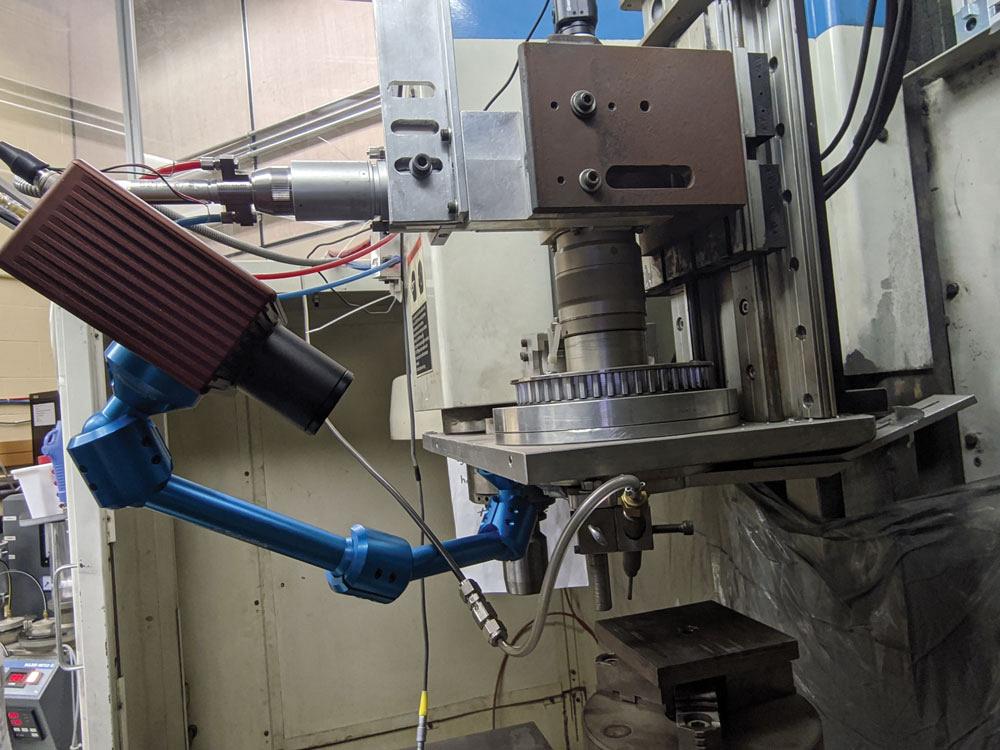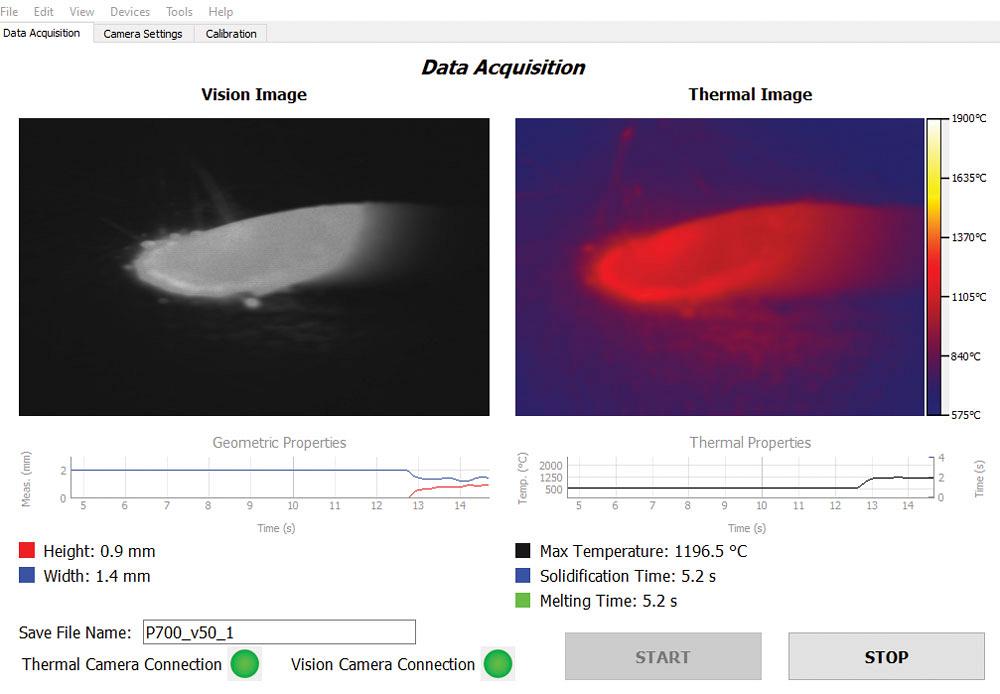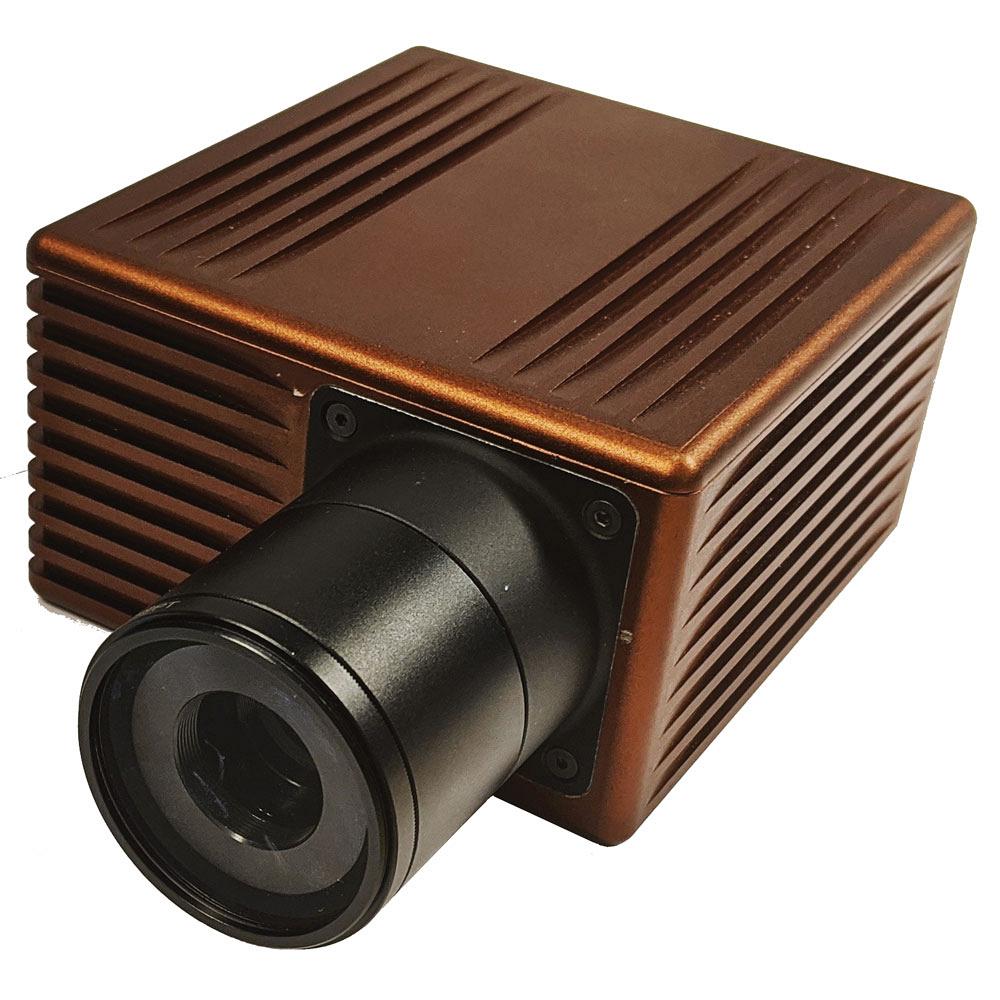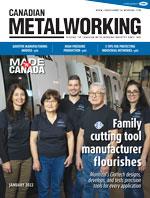Editor
- FMA
- The Fabricator
- FABTECH
- Canadian Metalworking
Technology Spotlight: Additive manufacturing module
Retinex MOC module helps monitor, optimize, control the direct energy deposition process
- By Joe Thompson
- January 13, 2022
- Article
- Metalworking

Retinex, Waterloo, Ont., has developed a product to monitor, optimize, and control the direct energy deposition (DED) build process.
The Industrial Internet of Things (IIoT) is changing the way manufacturers interact with their machines. And as the technology in shops gets more advanced, the more important communication protocols become.
All digital manufacturing experts recommend that manufacturers start listening to what their machines are saying by connecting in a more in-depth and digital way. Equally important, however, is using data collected by this connection to continually adapt and improve the manufacturing process. Enter the next generation of tools.
Monitor, Optimize, Control
For manufacturers with additive manufacturing (AM) capabilities in their shop, a new tool has been designed to monitor, optimize, and control the direct energy deposition (DED) build process. It’s called the MOC.
Retinex, Waterloo, Ont., has developed this product after 15 years of research at the University of Waterloo Automated Laser Fabrication Laboratory by company founders and PhD candidates Lucas Botelho and Richard van Blitterswijk. Today Botelho is Retinex’s CEO and van Blitterswijk is CTO.
During their time at the university, the pair found that there was no technology on the market that directly dealt with AM build inconsistencies caused by problems with the material’s properties that occurred during the high-temperature processing found in AM.
“Our research at the University of Waterloo was focused on real-time control of laser additive manufacturing (LAM). However, to first implement control, the process needs to be accurately monitored to measure the error between the current state or geometry and the desired one,” explained Botelho. “Initially we had planned to purchase a unit for monitoring; however, the options that were available on the market did not have the functionality that we desired and were very expensive. Therefore, we pivoted our research to focus on monitoring in addition to control. This resulted in the creation of our MOC system.”
The software and methodology for controlling the process are based on the knowledge the pair picked up in their university’s Automated Laser Fabrication lab. The design and prototyping of the MOC system were conducted in 2019 with financial support from Waterloo’s Commercialization Office, and in July 2021 Retinex was founded.
“Initially we used the MOC system for our own research, but through talking to other research labs and industry partners we garnered some interest, so our company became incorporated,” said Botelho.
At the beginning, the team’s original system was designed to be used with the LAM machine at the University of Waterloo, which already had in place all of the other key components, such as the laser, powder feeder, and CNC. Botelho and van Blitterswijk used their invention as a retrofit onto the pre-existing machine.
It was then that they realized that this ability makes the MOC system more marketable to potential customers because it can be added to existing equipment, not just new machine builds.
How It Works
As the name implies, the MOC system helps monitor, optimize, and control the AM build process. It does so by revealing highly detailed information about the melt pool, such as the height and width of the deposition and the ongoing thermal dynamics, which can be used to predict the microstructure of the completed part.
It’s a technology so unique that the process for controlling the material properties and geometry in real time is patented.
“In filing for the patents, it was important to patent the process and not just the hardware, since the process is the key differentiation from others trying to control LAM. Our patent is the first in industry to measure and control the melt pool cooling rate, which has been a missing link for controlling material and mechanical properties up to now,” said Botelho.
The Retinex system includes both hardware and software elements. According to the developers, the hardware’s design currently provides comprehensive insight into both geometry and material properties of the manufactured part by incorporating dual vision and thermal vision sensors. There are, however, potential areas for improvement and design variations that could expand the potential product lineup.
The software, on the other hand, continues to evolve as the system is tested on new parts, processes, and materials.
“The accuracy of measurements and the effectiveness of the control system have improved with testing. Additionally, as more materials and process parameters are tested, the monitoring and control are further improved,” said Botelho.
Visible and Infrared
The hardware of the MOC system uses imaging in both visible light and infrared wavelengths to capture a small field of view focused on the laser during the LAM build. The software then processes these images to predict the critical parameters in real time.
The three critical parameters are:
- Deposition (or weld bead) height.
- Deposition (or weld bead) width.
- Temperature distribution in the melt pool and heat-affected zone.
The software then communicates with the LAM machine’s drivers to change its speed or laser power to compensate for any detected errors.
“AM currently faces issues with the quality of parts and consistency,” said Botelho. “A lot of time and resources go into testing the parts to verify their quality. When designing a new part, manufacturers need to create many iterations to determine the ideal settings to create parts of sufficient quality. Monitoring the process in real time allows errors to be detected on-the-fly. These errors can be controlled by changing the machine settings in real time, or if a serious error is detected, the manufacturing process can be stopped immediately. This results in saving the resources that would be expended finishing a faulty part and to check its quality after manufacturing,” said Botelho.

The MOC measures deposition height and width as well as the temperature distribution in the melt pool and heat-affected zone.
This system was specifically designed to be used with DED, also known as laser cladding. DED typically features a substrate that acts as a base, a powder nozzle to transfer powder and inert gas to the desired area, and a laser to fuse the powder to make a solid part.
While this system initially was designed for use in LAM, another process that uses a concentrated energy source used to join metals—welding—has piqued the company’s interest.
“Because both welding and LAM have a similar heat-affected zone and work with the same principle, the same hardware can be used to capture images of both processes. In these processes there are different parameters that are most critical, and, therefore, the image processing may change. But the MOC system can be used for welding as well. Laser heat treatment is another potential process that can benefit from the MOC system for similar reasons,” said Botelho.
To grow, the company it has reached out to other facilities at the University of Waterloo as well as industrial partners with interest in real-time monitoring and control.
It currently has three systems deployed: one monitoring DED at the University of Waterloo, one monitoring welding at the University of Waterloo, and the latest system monitoring DED with an industry partner.
“We continue to reach out to other interested parties and are regularly hosting demonstrations of our product,” said Botelho.
Editor Joe Thompson can be reached at jthompson@canadianmetalworking.com.
Retinex, www.retinex.ca
About the Author

Joe Thompson
416-1154 Warden Avenue
Toronto, M1R 0A1 Canada
905-315-8226
Joe Thompson has been covering the Canadian manufacturing sector for more than two decades. He is responsible for the day-to-day editorial direction of the magazine, providing a uniquely Canadian look at the world of metal manufacturing.
An award-winning writer and graduate of the Sheridan College journalism program, he has published articles worldwide in a variety of industries, including manufacturing, pharmaceutical, medical, infrastructure, and entertainment.
subscribe now


Keep up to date with the latest news, events, and technology for all things metal from our pair of monthly magazines written specifically for Canadian manufacturers!
Start Your Free Subscription- Trending Articles
Sustainability Analyzer Tool helps users measure and reduce carbon footprint

Mitutoyo updates its end-user portal

Enhance surface finish with high-speed machining

Equispheres secures $20 million investment round

Solid carbide drills produce precision holes in short chipping materials

- Industry Events
Automate 2024
- May 6 - 9, 2024
- Chicago, IL
ANCA Open House
- May 7 - 8, 2024
- Wixom, MI
17th annual Joint Open House
- May 8 - 9, 2024
- Oakville and Mississauga, ON Canada
MME Saskatoon
- May 28, 2024
- Saskatoon, SK Canada
CME's Health & Safety Symposium for Manufacturers
- May 29, 2024
- Mississauga, ON Canada
















